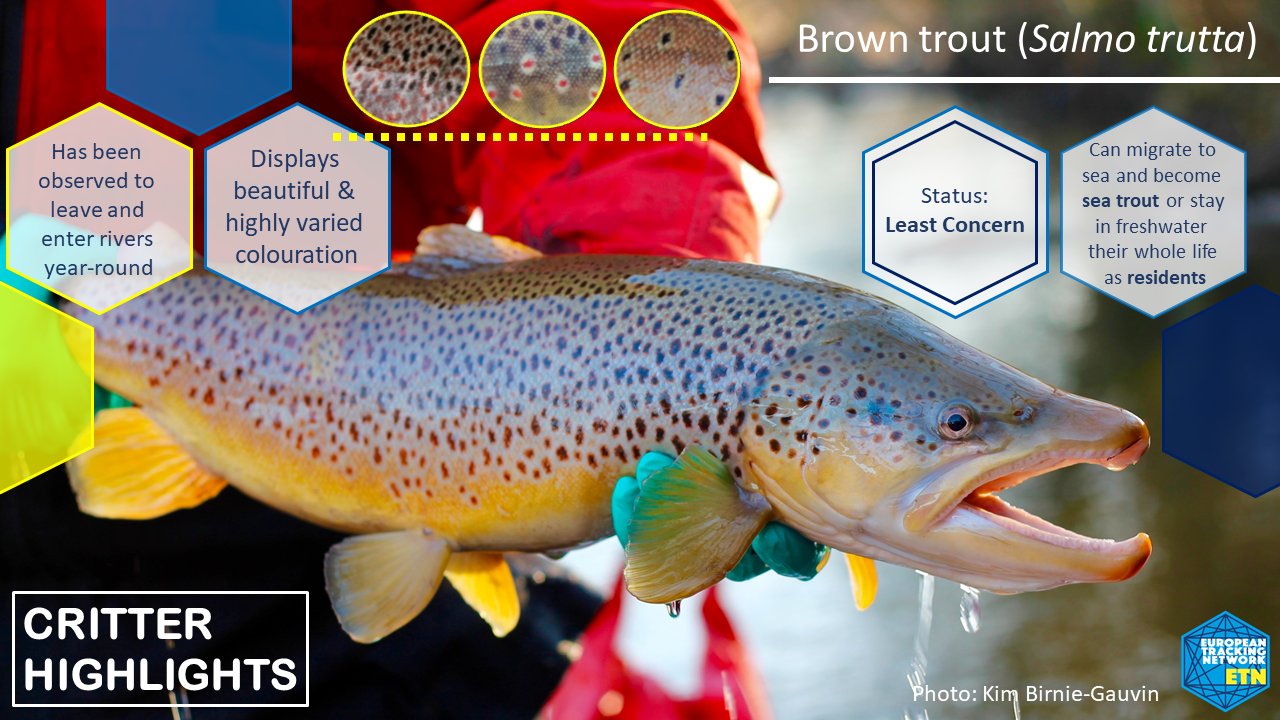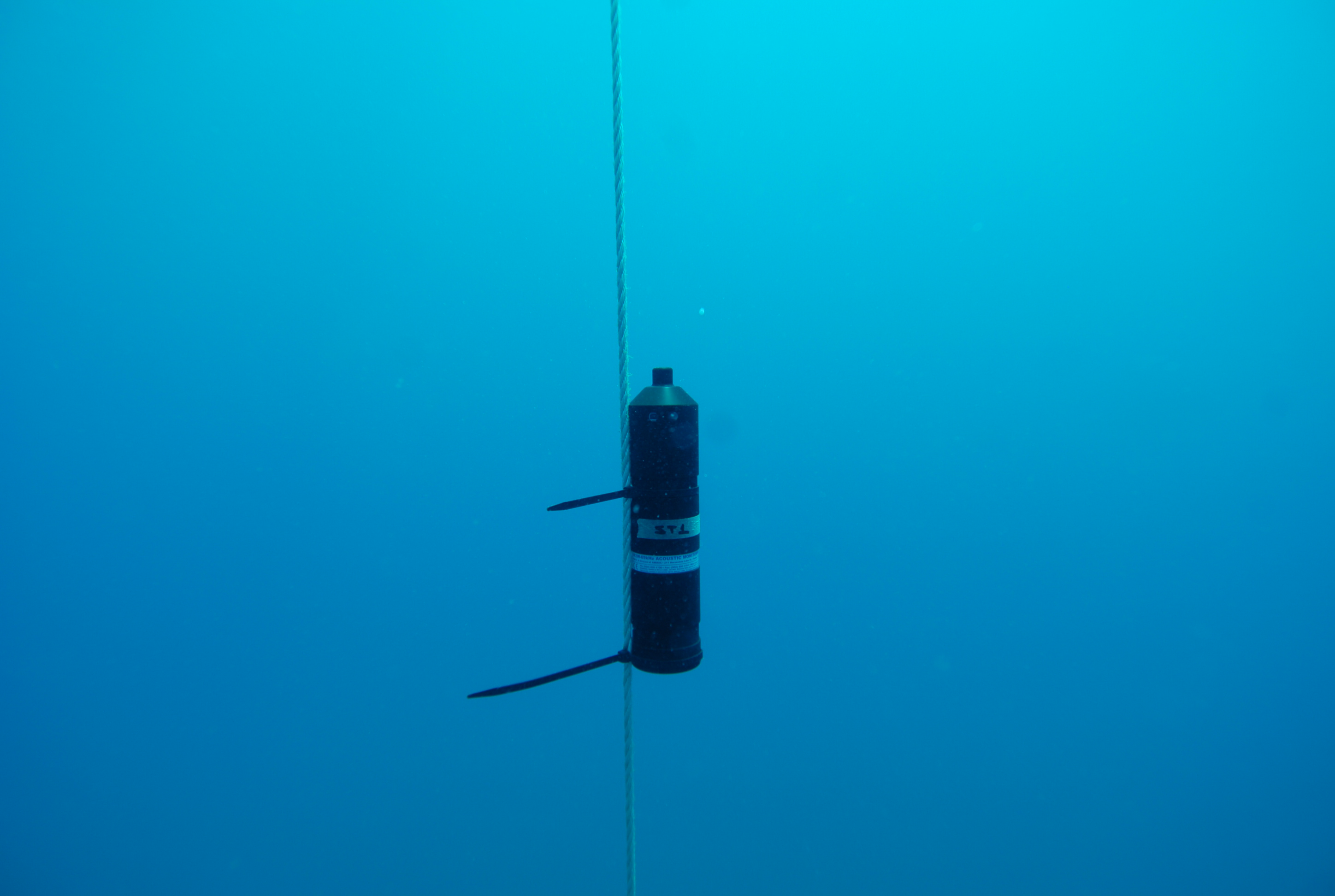This article is adapted from http://www.europeantrackingnetwork.org/compatibility

Acoustic telemetry is a technology that uses transmitters and receivers to remotely detect the location of animals. The ability to track animals through their environment can give us lots of information about their behavior, which teaches us about their biology, and ecology. Knowing where an animal spends its time can tell us what habitats and resources are important to it. We can also measure interactions between animals with telemetry, and monitor their fates when they move long distances. Recent advances in the technology have mitigated some limitations like the size of animals that can be tagged, and the types of environments that we can track them in. Tags are getting smaller and smaller, battery life is improving, and now tags can be equipped with sensors which give us auxiliary information like their body temperature, or how fast they are moving. Also, new softwares are being developed to get better precision from position estimates. It’s a very exciting time to be a telemetry scientist.

The use of acoustic telemetry requires two main functions: tagging animals and maintaining some set of receivers to passively detect those tagged animals. When a tagged animal is within the range of a receiver, its unique ID code is transmitted and logged, so that the researcher knows at what time the animal was there. Sets of receivers are often called “arrays”. The size of a researcher’s array depends on how many receivers they can afford with their funding, how many they can feasibly maintain with their available personnel, and to some extent the size of the range of their study species. Now that there are established arrays all over the world that are maintained by dozens of different researchers, a need for collaboration has emerged. Sometimes, researchers detect transmitter IDs that they don’t recognize, because they came from another researcher somewhere else. In some cases, researchers may share receivers to maximize the information they get out of their transmitters. Large networks for data sharing and collaboration have been created to help connect those researchers and also to minimize redundant receiver coverage. There are lots of benefits to being a part of these networks, but there are still major technological roadblocks that are preventing them from reaching their full potential.
The main hindrance to progress for these collaborative networks is lack of intercompatibility between the equipment made by different manufacturers. There are three important terms to define first before I describe the problem any further.
- Tag protocol: the set of unique tag IDs a manufacturer can use. It is a computer code script that defines the IDs based on pulse position modulation (PPM).
- PPM: Pulse position modulation. Tags transmit a series of pulses and each series of pulses defines a unique ID. This unique ID is encoded in the time intervals between the successive pulses.
- Code map: A receiver is programmed to listen for a set of tag protocols. This list defines the code map.
When combined, these three ingredients act as a cypher to decode the data that are received from transmitters. Without this information, acoustic tag signals are just noise. Until recently, equipment manufacturers did not have formal agreements regarding tag protocols, ID allocation and tag serial numbers. However, there was a ‘gentlemen’s agreement’ in place where each manufacturer was allocated a certain block of ID codes they could use. There were only a few tag protocols operational (R64K, S256, R04K, R256) that were used by the different manufacturers (see table 1), so the gentlemen’s agreement was working well.
Recently, one of the major manufacturers of acoustic telemetry equipment introduced a new encrypted operating system for their tags and receivers and has stopped using the other protocols. Since the tags are encrypted, and the receivers no longer listen for old protocols, 4 important implications arise:
- Tags from this manufacturer will not transmit to receivers from other manufacturers;
- Receivers from this manufacturer will not detect tags from other manufacturers;
- Tags from this manufacturer may transmit different IDs to receivers from other manufacturers
- Researchers will not be able to “mix and match” telemetry equipment from different manufacturers so their needs are best addressed, and may be tied to a single operating system.
For a really nice summary of the problem, watch this video from the European Tracking Network: https://www.youtube.com/watch?v=axuMwt0ev_w
Reliance on a single manufacturer could stifle innovation within the telemetry community and restrict the scope, type and flexibility of research. With their own secret tag protocols, the company can hike up unit prices on equipment since the other manufacturers cannot compete. In a free market, competition keeps unit prices down, and keeps consumers (in this case telemetry researchers) happy. In Europe, this single manufacturers system would not meet the requirements of EU competition legislation, which could hinder some organizations ability to bid for European funding.
In essence, this means that buying into this new encrypted operating system will lead to acoustic systems being incompatible across the world. The result will inevitably be that the many tracking networks will fail at their primary goal: broad scale collaboration.

The European Tracking Network has been the most vocal about this problem. “As a network, they believe this new system would have major consequences for future research by compromising collaborations between acoustic telemetry users and a potential loss of valuable data. Existing long-term research projects on large and wide-ranging pelagic species could suffer if existing global telemetry networks differed in their implementation of the new operating system. For instance, large pelagic fish – for example tuna tagged in Europe with multi-year tags operating on the existing system – may not be detected by colleagues operating the new non-compatible system in North America. Species with not yet known large migrations patterns will also go undiscovered.”
There is a solution.
A new agreement is replacing the old one.
Together with Thelma Biotel, Sonotronics and Lotek, the European Tracking Network has over the past year developed robust and energy-efficient transmission protocols aimed for the aquatic research community. The two initial versions of the new open protocols coding (OPC) have been named OPi and OPs, for ID and sensor tags respectively. OPi supports over 1 million unique IDs and OPs supports over 64 000 unique IDs with up to 4096 data points resolution. The protocols will be available for all interested manufacturers and researchers and compatible with the most common existing and new equipment. Open protocols encourage healthy and fair competition, flexibility in choosing the best equipment, service and price. Opening the infrastructure networks of acoustic telemetry to all manufacturers of different types of sensors and tags drives innovation, and boosts availability of new solutions for future research.
I think the moral of the story is that researchers should be empowered to make choices that drive development of new tagging technologies. By working with tagging manufacturers, and leveraging the strength of these networks, we can be the drivers of technological advancements, and not be constrained by secret black-box technology. After all, we’re all on the same team: we just want to track fish the best way we know how.
